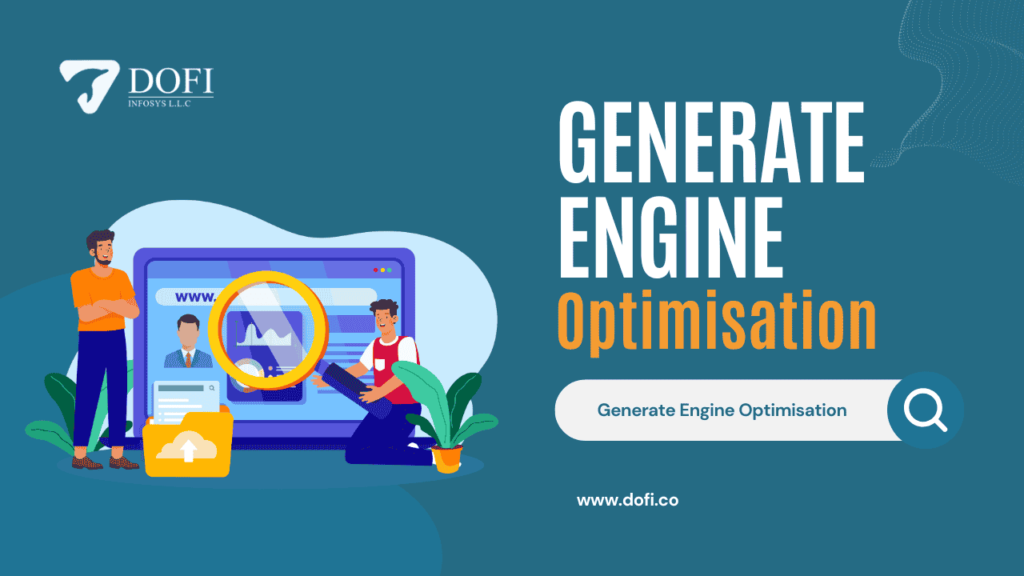Introduction to Generate Engine Optimization
Generate Engine Optimization, commonly known as GEO, represents a revolutionary approach to digital content creation and optimization that has transformed how businesses approach online visibility. Unlike traditional search engine optimization methods, GEO focuses on the systematic generation and optimization of content through advanced algorithmic processes that align with modern search engine requirements.
What is GEO?
The concept of GEO has emerged as businesses recognize the need for scalable, efficient content creation methods that maintain quality while meeting the ever-increasing demands of digital marketing. Generate Engine Optimization combines artificial intelligence, machine learning, and strategic content planning to create optimized content at scale, making it an essential tool for modern digital marketers.
Why GEO Matters in 2025
Understanding GEO requires recognizing its fundamental difference from conventional optimization approaches. While traditional SEO focuses on optimizing existing content, Generate Engine Optimization emphasizes the creation of new, highly optimized content through systematic generation processes. This approach ensures that every piece of content produced meets specific optimization criteria from the moment of creation.
The importance of GEO in today’s digital landscape cannot be overstated. As search engines become more sophisticated and user expectations continue to rise, businesses need efficient methods to produce high-quality, optimized content consistently. Generate Engine Optimization provides the framework and methodology necessary to achieve this goal while maintaining relevance and engagement.
Understanding the Core Principles of GEO
Generate Engine Optimization operates on several fundamental principles that distinguish it from other content optimization methodologies. These core principles form the foundation of successful GEO implementation and determine the effectiveness of any Generate Engine Optimization strategy.
1. Data-Driven Content Generation
The first principle of GEO involves systematic content generation based on comprehensive keyword research and user intent analysis. Unlike traditional content creation methods, Generate Engine Optimization begins with detailed analysis of search patterns, user behavior, and content gaps in specific markets. This data-driven approach ensures that generated content addresses real user needs while incorporating optimal keyword strategies.
2. Intelligent Automation
Automation plays a crucial role in effective GEO implementation. Generate Engine Optimization leverages advanced tools and technologies to streamline content creation processes while maintaining quality standards. This includes:
- Automated keyword integration
- Content structure optimization
- Real-time performance monitoring
- Dynamic parameter adjustment based on results
3. Quality Control Mechanisms
Quality control mechanisms are integral to successful Generate Engine Optimization strategies. While automation enables efficient content generation, human oversight ensures that generated content meets brand standards, maintains authenticity, and provides genuine value to users. The most effective GEO approaches combine automated generation with human refinement and quality assurance processes.
4. Scalability Framework
Scalability considerations drive many GEO implementation decisions. Generate Engine Optimization must accommodate growing content needs while maintaining consistency and quality across all generated materials. This requires robust systems and processes that can handle increased volume without compromising the fundamental principles that make GEO effective.
5. Strategic Integration
Advanced GEO Strategies for Maximum Impact
Implementing advanced Generate Engine Optimization strategies requires a sophisticated understanding of both technical optimization principles and content generation methodologies. The most effective GEO approaches combine multiple strategic elements to create comprehensive optimization frameworks that deliver sustained results.
- Content Clustering Strategy
- Semantic Optimization Approach
- User Experience Integration
- Performance-Driven Optimization
- Competitive Intelligence Integration
Technical Implementation of GEO Systems
The technical foundation of Generate Engine Optimization requires sophisticated systems and processes that can handle complex content generation requirements while maintaining quality and optimization standards. Understanding these technical elements is essential for successful GEO implementation.
Infrastructure Requirements
Infrastructure requirements for effective GEO include robust content management systems capable of handling large volumes of generated content. Generate Engine Optimization platforms must support:
- Automated content creation workflows
- Optimization process integration
- Publication scheduling capabilities
- Quality assurance checkpoints
- Performance monitoring systems
API Integration Framework
API integrations play crucial roles in comprehensive GEO implementations. Generate Engine Optimization systems often require connections to:
- Keyword research and analysis tools
- Analytics and performance platforms
- Content distribution networks
- Social media management systems
- Email marketing platforms
- Customer relationship management systems
Quality Assurance Protocols
Quality assurance protocols within GEO systems ensure that generated content meets established standards before publication. These protocols typically include:
- Automated checks for grammar and spelling
- Keyword optimization verification
- Content structure analysis
- Readability score assessment
- Human review processes
- Brand consistency validation
Content Optimization Algorithms
Content optimization algorithms form the core of successful GEO systems. These algorithms analyze various factors including:
- Keyword density and distribution
- Semantic relationship mapping
- Content structure optimization
- User engagement predictions
- Search engine compatibility
- Mobile optimization factors
Distribution Automation
Distribution automation capabilities enable efficient publication and promotion of generated content across multiple channels. GEO systems should support:
- Automated content scheduling
- Social media posting integration
- Email newsletter distribution
- Multi-platform publishing
- Cross-channel promotion
- Performance tracking across channels
Conclusion
Generate Engine Optimization represents a paradigm shift in how businesses approach content creation and digital marketing. By leveraging GEO strategies, organizations can achieve scalable, efficient content production while maintaining high quality and optimization standards.
The key to successful GEO implementation lies in understanding its core principles, implementing advanced strategies, and continuously measuring and optimizing performance. As technology continues evolving, businesses that master Generate Engine Optimization will maintain competitive advantages in increasingly crowded digital markets.

